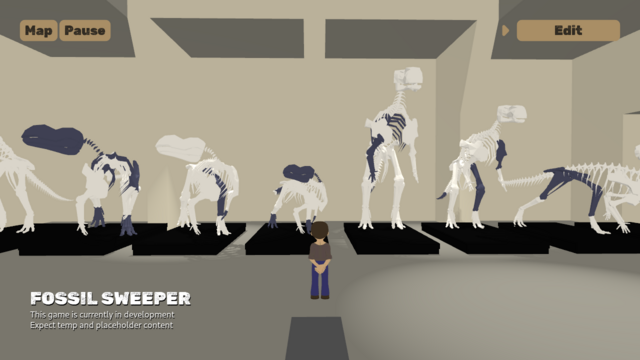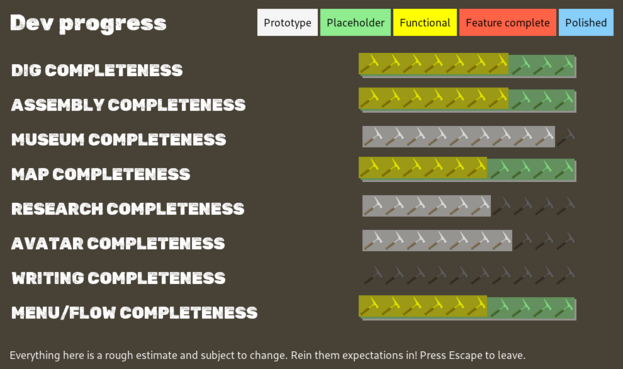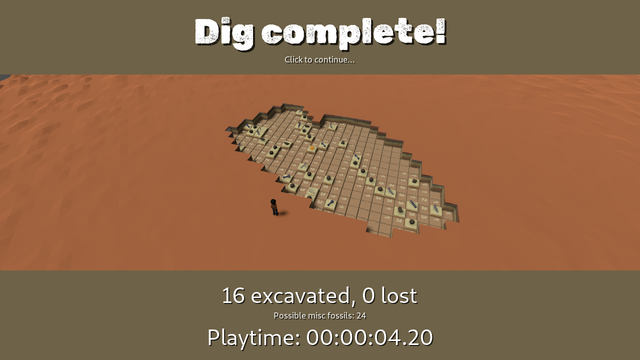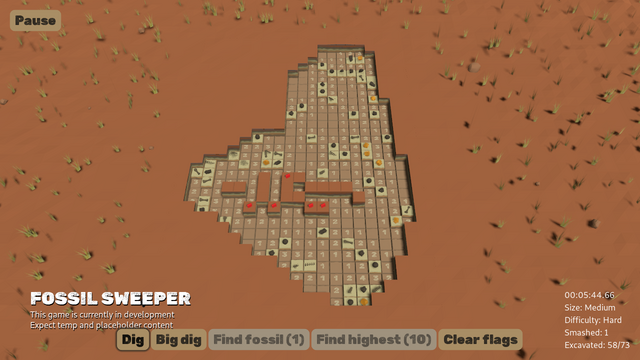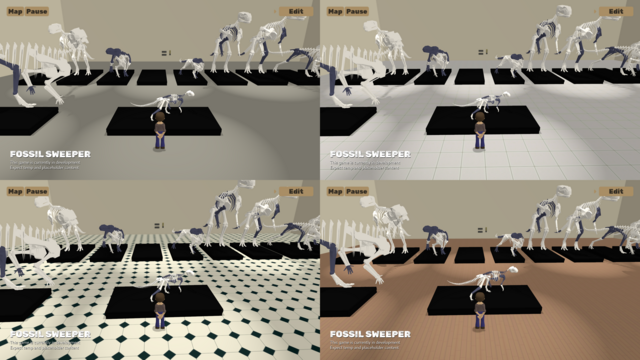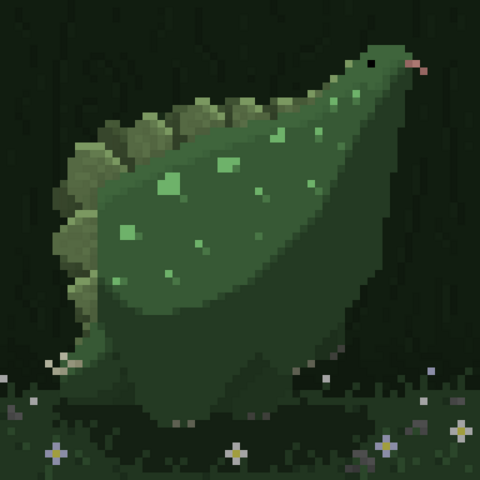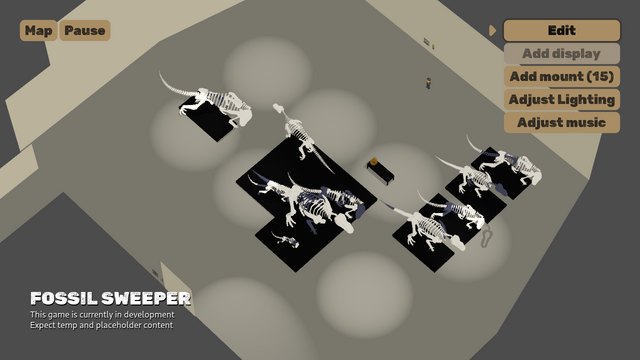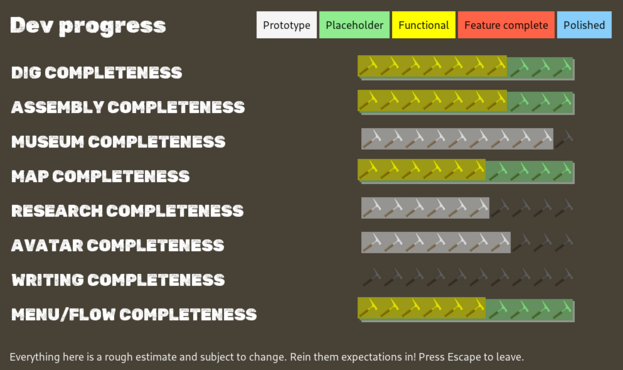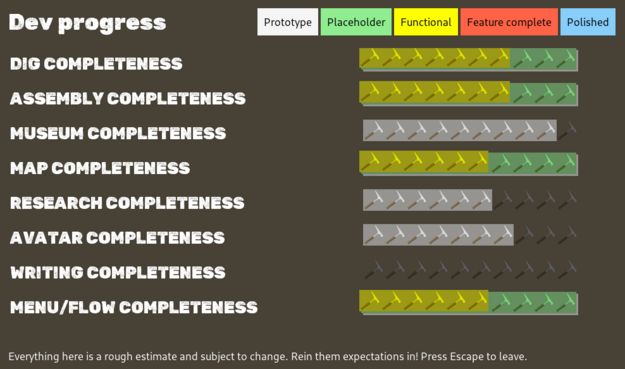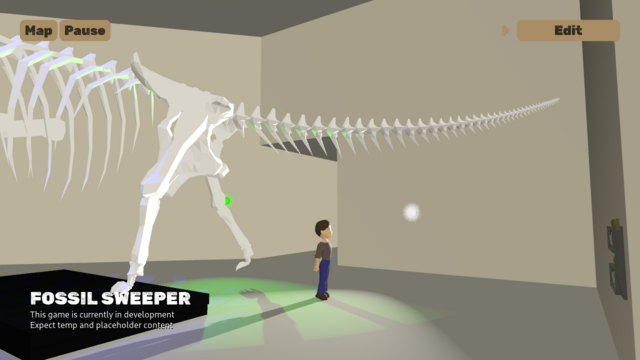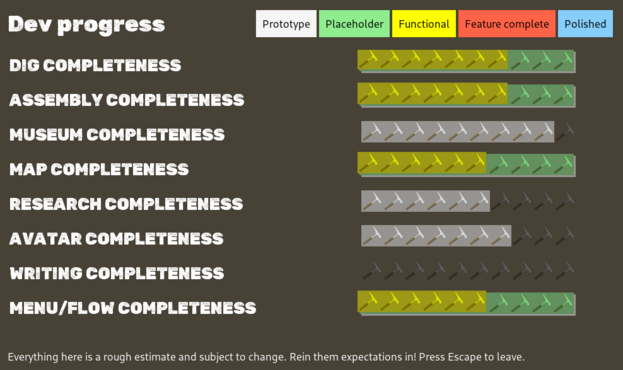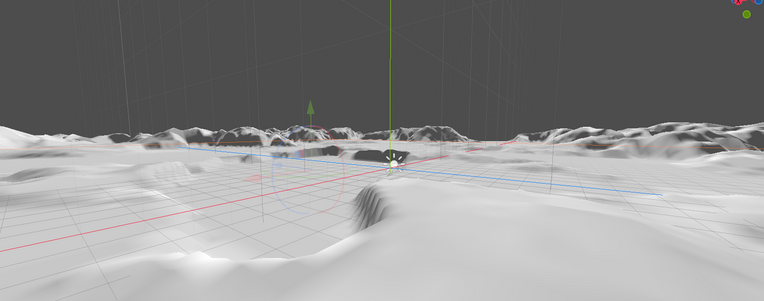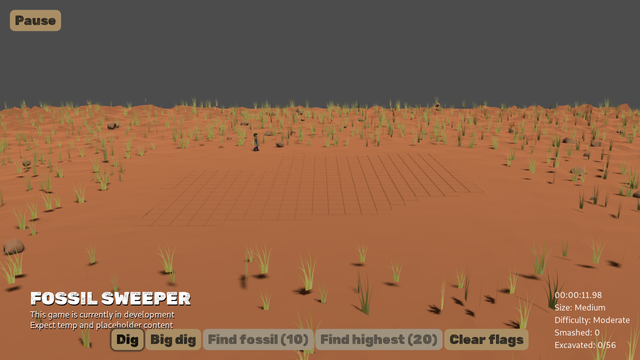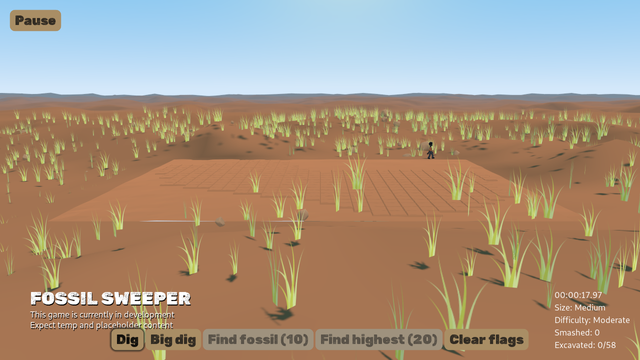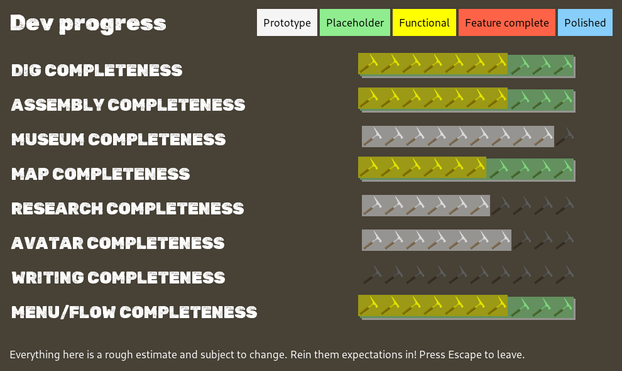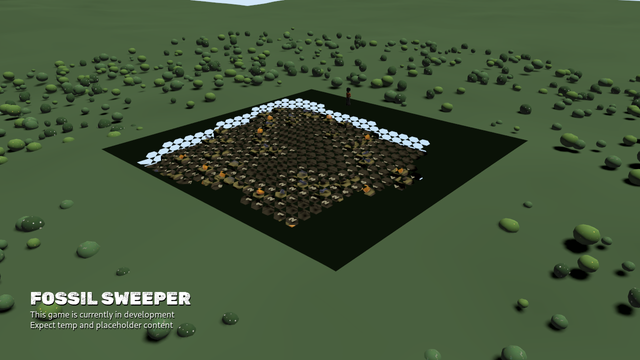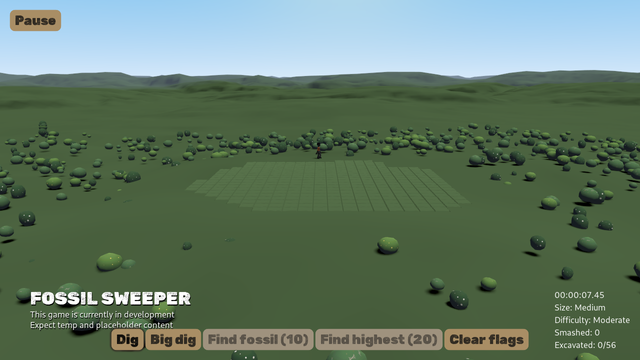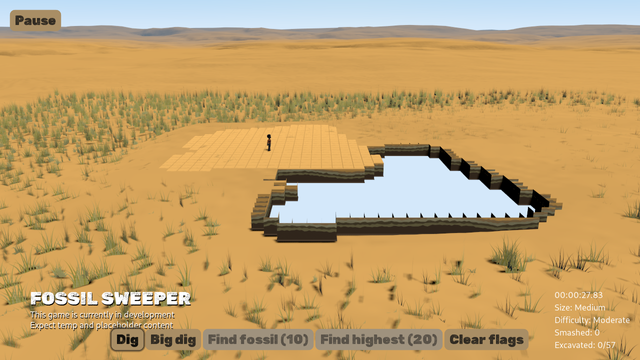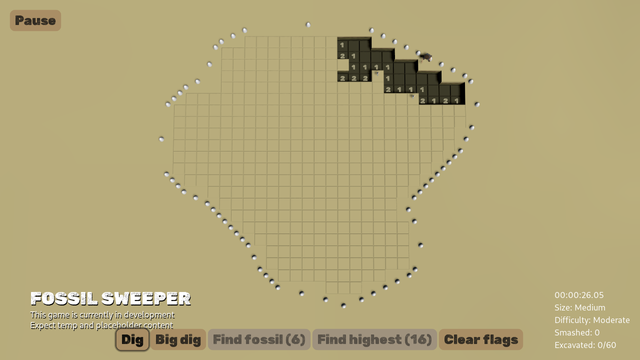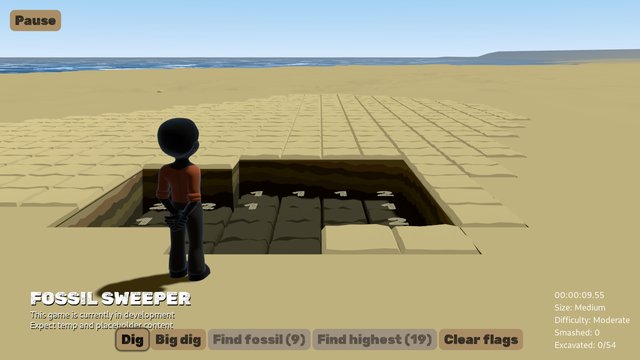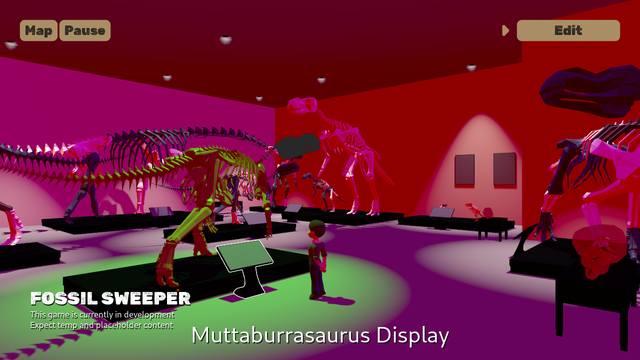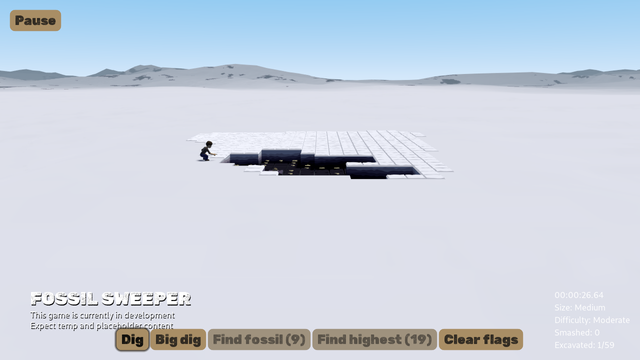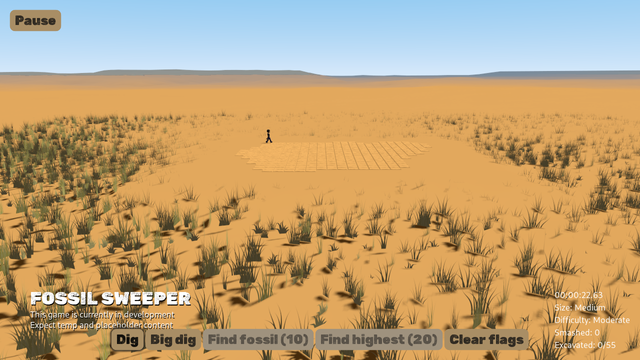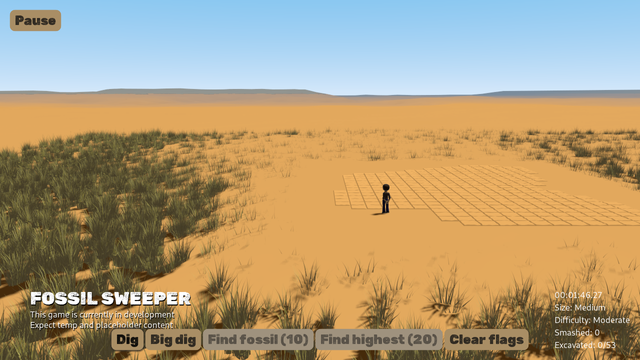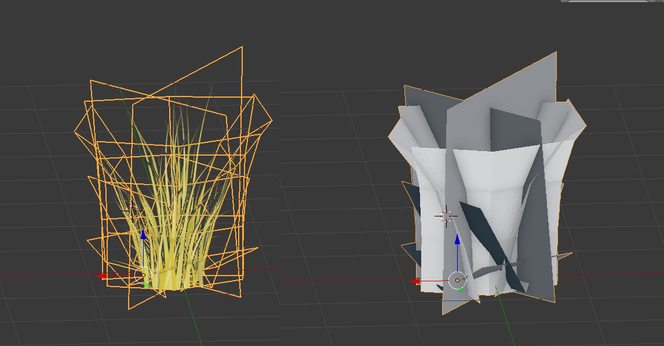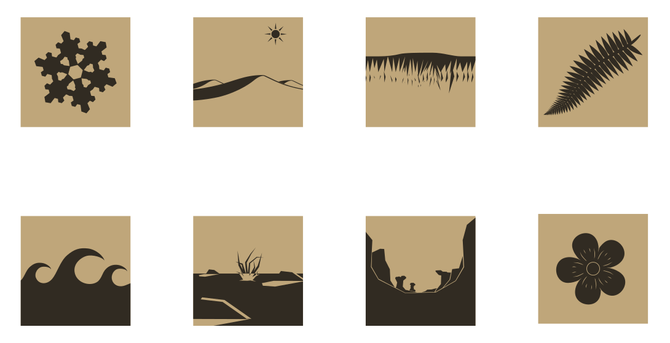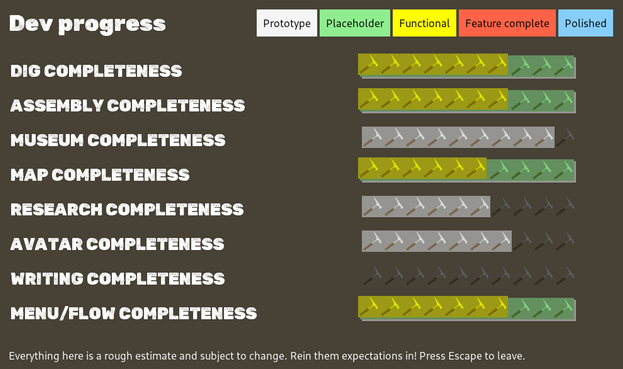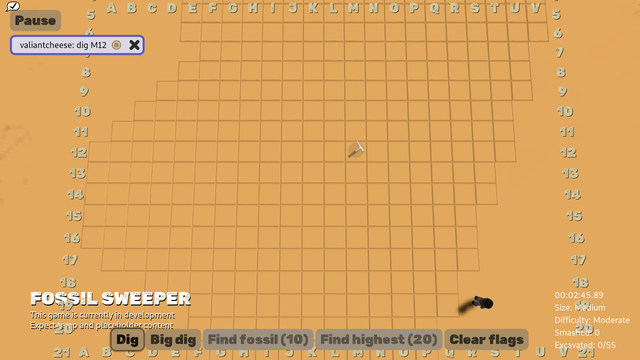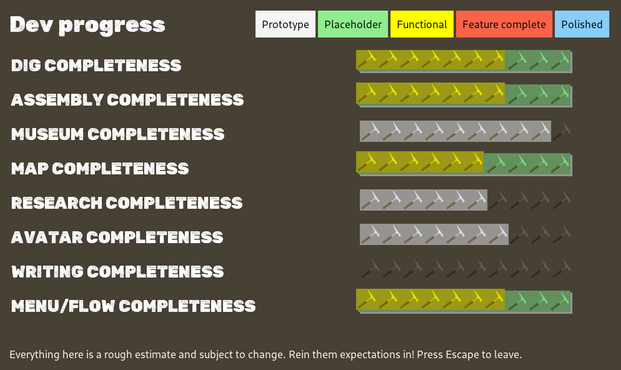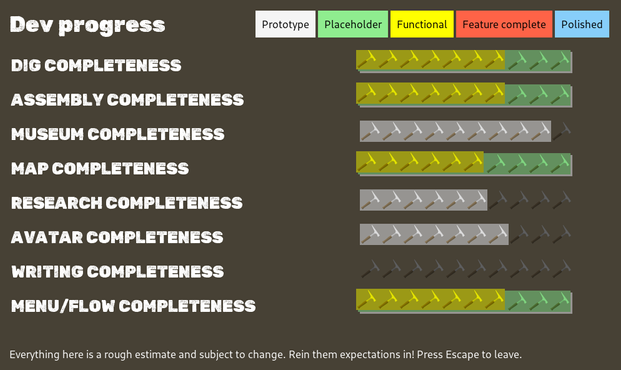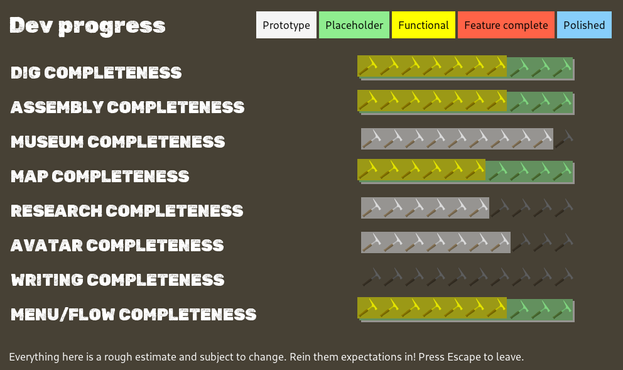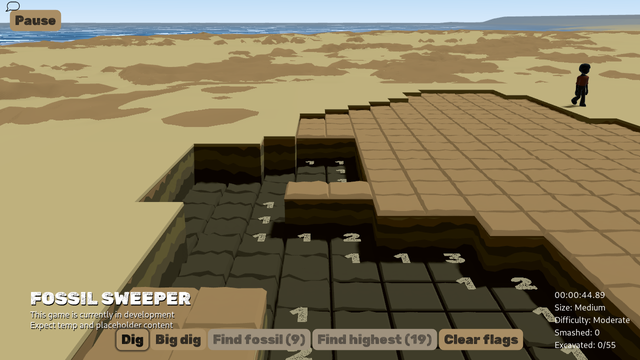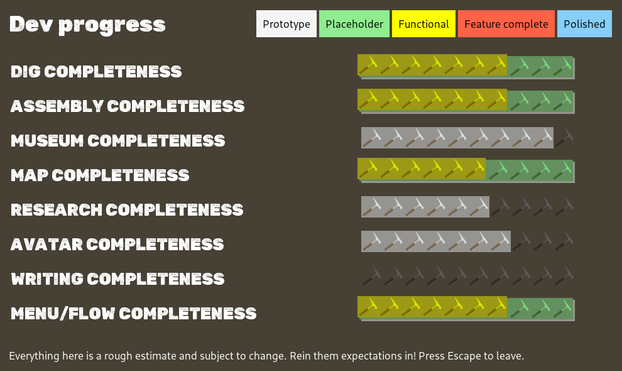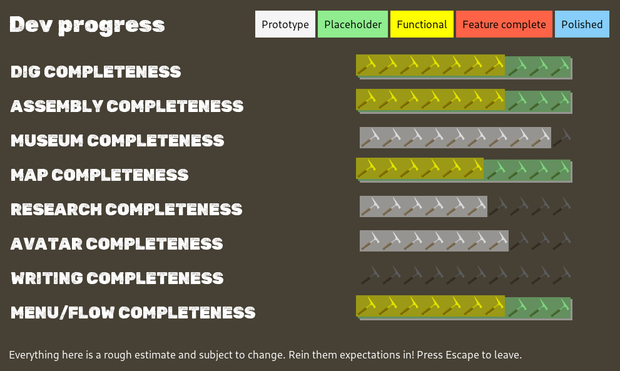The January progress update video is running a little late (January's been busy in general, and this video is a bit bigger than usual). I've still been doing bits and pieces though.
Today I finished implementing size variation for skeletons across the assembly phase/museum. Not sure to what extent I'm going to try to express ontogeny, but regardless, it's cool to have every skeleton be unique now \o/
Still unsure on expressing ontogeny in this, but if I do, smaller will have younger features
Fossil Sweeper Progress Update XX
Expanding the perimeter by one tile in cardinal directions helps get rid of the single-tile "protrusions" seen on the far left side of the previous screenshot (those tend to be awkward/more likely to require a guess, which is less-interesting gameplay).
Still need to think about what all this means for coordinates when playing with TTS (don't think I'll do anything special, but there's a big amount of "wasted" coordinate space in the top left and bottom left).
Because these are generated, I get a bunch of variation for free. I don't think that variation feels like "content," but it helps make digs feel less samey, which is a big deal for the sort of game this is.
I've still got a bunch of other stuff to wrap up before I can start focusing in earnest on content and variation density, but it's exciting to on the cusp of.
I mocked up some museum floor textures for the last video, and variation there from such a minimal change is more than I expected.
I spent some of today's stream poking around with hotloading meshes and attaching them to existing skeletons (for character customisation).
I already do this in places with skeleton fossil chunks, and I'd done some previous experiments, but it seems I'd overlooked that vertex group information seems to get broken/stomped on if meshes are exported separately - and not consistently (if they're *imported* as separate files, that's fine). A little frustrating, but I think I have something workable.
Edit: Forgot the URL -_-
https://www.patreon.com/posts/99212430
https://www.youtube.com/watch?v=mJwTAGkNX8A
#indiedev #devlog #GodotEngine
Fossil Sweeper Progress Update XXI
https://www.patreon.com/posts/100631563
https://www.youtube.com/watch?v=gYzmPomh9CM
#indiedev #devlog #GodotEngine
Fossil Sweeper Progress Update XXII
https://www.patreon.com/posts/103006066
https://www.youtube.com/watch?v=2xSnvx_kopI
#IndieDev #DevLog #GodotEngine #GameDev
Fossil Sweeper Progress Update XXIII
https://www.patreon.com/posts/107172804
#indiedev #devlog #GodotEngine
Fossil Sweeper Progress Update XXV
https://www.youtube.com/watch?v=z3dvpcS_jOU
#IndieDev #DevLog #GodotEngine #GameDev
Composing Fossil Sweeper's Soundtrack - Progress Update XXVI
https://www.patreon.com/posts/108587230
https://www.youtube.com/watch?v=SwSagPP4ZDU
#IndieDev #DevLog #GodotEngine #GameDev
More Heightmaps & Better Grass - Fossil Sweeper Progress Update XXVII
#IndieDev #DevLog #GodotEngine #GameDev
Chat integration - Fossil Sweeper Progress Update XXVIII
#IndieDev #DevLog #GodotEngine #GameDev
Wrangling Coordinate Labels - Fossil Sweeper Progress Update XXIX
https://www.patreon.com/posts/117226120
https://www.youtube.com/watch?v=wiE79LuRtFo
#IndieDev #DevLog #GodotEngine #GameDev
More Chat integration - Fossil Sweeper Progress Update XXX
https://www.patreon.com/posts/118985122
https://www.youtube.com/watch?v=BqktkOFFsjk
#IndieDev #DevLog #GodotEngine #GameDev
Map Phase Chat integration - Fossil Sweeper Progress Update XXXI
https://www.patreon.com/posts/121163647
https://www.youtube.com/watch?v=2YhVjhfl00k
#IndieDev #DevLog #GodotEngine #GameDev
Recessed dig sites & automatic flagging - Fossil Sweeper Progress Update XXXII
Small QOL thing I've been working on is changing the behaviour of tile colliders. I now scale up on mouse over, which means that you need to move further to move off the current tile, and when digging, I hold the collider in its current position until you move off it so that the tile behind doesn't get automatically selected.
I never felt missclicks were a thing that happened frequently, but they did happen from time to time, and it's nice to have a way of addressing that little friction point
@Cheeseness Wait there's a time slider?
That's what GPlates https://www.gplates.org/ has! I used to work on it!
@neko Very cool! I have GPlates installed here. What sort of stuff did you do?
Fossil Sweeper's time slider was one of the first things I worked on when I started this larger version. It represented a significant unknown that I didn't have a workflow for, so it made sense to front-load (here's the first video of this version of the project that I recorded back in January 2022 :D )
@Cheeseness Things are just so much _simpler_ when there's just the Australian plate.
I didn't touch the rotation code too much, too many quaternions, but did some of the Qt GUI work and file IO.
I'm afraid I'm also Responsible for GPML, but I'd like to shift at least some of the blame to GML and Standards™
@neko Nice! :D
The nice thing about Fossil Sweeper at least is that I'm aiming for something that feels stylistic rather than realistic, and only showing visible landmases means I don't need to care about what any of my geometry is doing under the "ocean"
